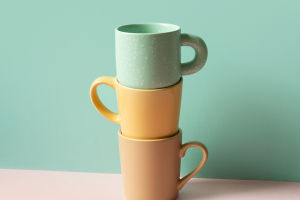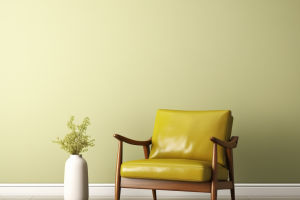Modern minimalist style has gained popularity for its focus on functionality, simplicity, and clutter-free spaces.
This approach isn't only about aesthetics but about creating practical, livable interiors.
Here's how modern minimalist design centers around interior practicality and the benefits it brings.
1. Purpose-Driven Design
At the heart of modern minimalism is purpose. Every item in a minimalist space has a clear function, eliminating unnecessary objects to create an open, functional area. This "less is more" philosophy keeps the focus on essentials that contribute to comfort and usability.
Multifunctional furniture, like storage ottomans or fold-out desks, is common in minimalist designs, enhancing usability while maintaining a clean look. This makes the room adaptable to different needs, increasing comfort without adding clutter.
2. Clean Lines and Simple Shapes
A defining feature of modern minimalism is the use of clean lines and simple shapes. Straight lines and geometric forms give a streamlined look, enhancing both visual appeal and practicality by reducing distractions and making the space easy to maintain.
Minimalist spaces are also simpler to organize and clean, with fewer surfaces to dust and wipe. Clean lines create an environment that's calm and functional, helping occupants focus on practical tasks.
3. Neutral Color Palette
Minimalist interiors often favor neutral colors—whites, grays, beiges, and blacks—which make spaces feel larger and brighter. This palette supports a calming atmosphere, allowing occupants to relax and focus.
The versatile color scheme makes it easy to change decor or furniture without disrupting the space's aesthetic. Accent colors, if used, are minimal, adding depth without overwhelming the minimalist look.
4. Open Spaces and Natural Light
Modern minimalist design values open spaces and natural light, creating an airy, spacious feel. The absence of clutter allows for free movement, making it easy to transition between areas.
Large windows and strategically placed mirrors enhance natural light, contributing to a healthier, more pleasant environment. Open layouts support a variety of activities, from work to relaxation, making the home more adaptable to daily needs.
5. Functional Storage Solutions
Hidden storage solutions are essential in minimalist spaces, keeping items out of sight while maintaining accessibility. Built-in shelving, minimalist cabinets, and sleek drawers reduce visual clutter, ensuring that everything has a place.
Storage is often integrated into furniture, like beds with drawers or coffee tables with compartments, maximizing utility without adding bulk.
6. Sustainable, Quality Materials
Minimalism values quality over quantity, encouraging investment in sustainable, durable materials. High-quality options like wood, metal, and glass look sophisticated and have a long lifespan, aligning with a practical, eco-friendly lifestyle.
Choosing sustainable materials supports minimalist values by reducing waste and promoting mindful consumption. These pieces withstand trends, creating a timeless and practical look.
Modern minimalist style prioritizes practicality by focusing on purpose-driven design, clean lines, a neutral color scheme, open spaces, functional storage, and sustainable materials. This approach creates a beautiful, functional space by eliminating clutter and highlighting essentials.
For those seeking balance in their home, modern minimalism is an ideal solution. It fosters an intentional, organized environment that enhances daily life, bringing a sense of calm and purpose to every room.


